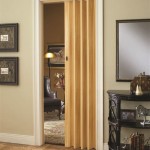Choosing the Right Colors for Your Interior: A Guide to Creating the Perfect Ambiance
Choosing the right colors for your interior is an essential aspect of creating a space that reflects your personal style and promotes a desired ambiance. Color plays a significant role in influencing mood, perception, and overall well-being. From vibrant hues that invigorate to calming tones that promote relaxation, the careful selection of interior colors can dramatically impact the feel of your home. This guide explores key considerations and factors to help you navigate the world of interior colors and make informed choices for your living spaces.
Understanding Color Psychology and Its Influence
Color psychology explores the connection between color and human emotions, behavior, and perceptions. Different colors evoke specific feelings and associations. For instance, warm colors such as red, orange, and yellow are often associated with energy, passion, and excitement. They can stimulate appetite and create a sense of warmth and intimacy. Conversely, cool colors like blue, green, and purple tend to evoke feelings of tranquility, calmness, and serenity. They can promote relaxation, focus, and a sense of spaciousness.
When choosing interior colors, it's crucial to consider the intended use of the space and the mood you wish to create. For example, a vibrant red accent wall might be suitable for a dining room, while a calming blue might be more appropriate for a bedroom. Understanding the psychological effects of color can help you select shades that align with your desired ambiance and enhance the overall experience within your home.
Factors to Consider When Choosing Interior Colors
Beyond color psychology, several practical factors come into play when selecting interior colors. These include:
1. Natural Light
The amount of natural light a room receives significantly impacts how colors appear. Rooms with abundant natural light can handle bolder and darker colors, while rooms with limited natural light benefit from lighter and brighter shades to avoid feeling gloomy. Consider the direction your windows face and the time of day they receive the most light.
2. Room Size and Shape
Color can manipulate the perception of space. Lighter colors tend to make rooms feel larger and more spacious, while darker colors can create a sense of intimacy and coziness. Consider using lighter colors on walls and ceilings to create a sense of openness in smaller rooms. Conversely, darker colors can be used on accent walls or furniture to define areas within larger spaces.
3. Existing Furniture and Decor
Your existing furniture and decor should be considered when choosing interior colors. Aim for a cohesive and harmonious look by selecting colors that complement or contrast your existing pieces. For example, if you have a lot of wood furniture, warm earth tones like brown, beige, and tan can create a cohesive and inviting atmosphere.
4. Personal Style and Preferences
Ultimately, the most important factor is your personal style and preferences. Choose colors that make you feel comfortable and happy in your home. Don't be afraid to experiment with different shades and combinations to discover what resonates with you. Explore color palettes and consult online resources for inspiration.
Creating a Cohesive Color Palette
Once you have considered the factors above, you can start developing a cohesive color palette for your interior. A color palette can be built around a single dominant color, featuring various shades and tones of that color. Alternatively, it can incorporate multiple colors that complement each other, creating a balanced and visually appealing scheme.
There are various color schemes to explore, such as:
1. Monochromatic:
Utilizes different shades and tones of a single color, creating a sense of unity and sophistication.
2. Analogous:
Combines colors that are adjacent to each other on the color wheel, creating a harmonious and balanced look.
3. Complementary:
Combines colors that are opposite each other on the color wheel, creating a high-contrast and dynamic effect.
4. Triadic:
Uses three colors that are equally spaced on the color wheel, creating a vibrant and visually stimulating effect.
By considering color psychology, practical factors, and the principles of color harmony, you can create a cohesive and inviting interior. As you explore different options, remember that the most important factor is to choose colors that bring you joy and reflect your unique personality.
Colores Fríos Para Decorar Interiores Inspiración 2024 Salas Modernas Decoración De Unas Pintar Casas
30 Colores Con Los Que Pintar Las Paredes De Tu Casa
Qué Colores Aplicar Para Los Interiores De Casas Modernas Prisa
30 Colores De Pintura Para La Sala Estar E Inspiración Un Espacio Acogedor Beamin Moore
Colores Cálidos Llenen De Confort Tu Sala Para Comedor Decoración Unas Interiores
Combinación De Colores Para Una Casa Más Elegante Foto 1
Colores En Interiores Cómo Usar Y Elegir Para
Colores De Pintura En Tendencia 2024 Tiza
Qué Colores Aplicar Para Los Interiores De Casas Modernas Prisa
Las Mejores Elecciones De Colores Para Renovar Tu Casa Pinturas Lepanto Fabricante Pintura Profesionales Y Distribuidores








